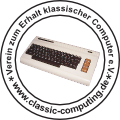My First Internet Thing
The reason for me entering the realm known as the "Internet of Things" is my constant battle for proper thermoregulation of our basement. In summer, I keep opening the basement windows at night in order to let cool nightly air in and close them in the morning. However, I didn't have any empirical evidence that following that procedure did have the desired effect (or any effect at all) since I didn't have any means to measure outdoor and basement temperature simply due to the lack of thermometers.
So when pondering over which thermometers to get, I occurred to me that it would be really cool if those thermometers radioed their measurements to some sort of smart home hub, thus allowing them to be viewed on e.g. the family tablet.
First Prototype
After wasting some time on research on how it might be possible to read out some readily available 433 MHz weather station, I stumbled over the ESP8266 chip -- an incredible combination of microcontoller an WiFi chip that fits nicely into the beginner-friendly Arduino ecosystem.
For my first attempt in creating a remote temperature sensor thing I used an ESP8266 development board called "NodeMUC" which features a built-in UBS-to-serial converter so that it can easily be programmed e.g. from within the Arduino IDE using standard USB equipment.
The actual temperature measurement is performed by a DHT22 sensor which comes with the bonus of also measureing humidity -- very nice, since it sometimes gets pretty damp in our basement and it would certainly be interesting to see if this problem could also be tackled by an outside air exchange approach.
The readings are transmitted via WiFi as JSON strings, enveloped in UDP broadcast datagrams, to all devices within our network who are willing to listen.
All in all, this is certainly nothing spectacular -- similar things have been done by many other people before me. Yet I must admit that I'm a little proud to have taken my first step into the Internet of Things. And since it is both a meteorological sensor and an internet thing, I call it "MeteoThing".
I actually made another (identical) prototype, which got placed on our terrace, so that I now can directly compare basement and outdoor temperature, allowing me to identify the perfect moment for opening and closing the basement windows.
Next Steps
- Integrate MeteoThings into some home automation software like OpenHAB
- Enable over-the-air update of the software
- Build a low-power version of the MeteoThing which will run for months on a recharcheble battery
- Build a solar-powered, water-proof version for outdoor usage






